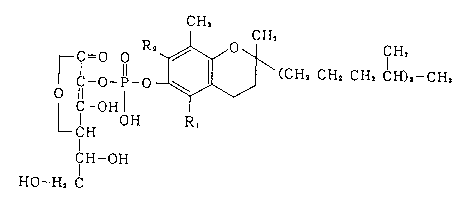Some of the information on this Web page has been provided by external sources. The Government of Canada is not responsible for the accuracy, reliability or currency of the information supplied by external sources. Users wishing to rely upon this information should consult directly with the source of the information. Content provided by external sources is not subject to official languages, privacy and accessibility requirements.
Any discrepancies in the text and image of the Claims and Abstract are due to differing posting times. Text of the Claims and Abstract are posted:
| (12) Patent Application: | (11) CA 2145968 |
|---|---|
| (54) English Title: | TOPICAL ANTIPRURITIC COMPOSITION |
| (54) French Title: | COMPOSE ANTIPRURIGINEUX TOPIQUE |
| Status: | Deemed Abandoned and Beyond the Period of Reinstatement - Pending Response to Notice of Disregarded Communication |
| (51) International Patent Classification (IPC): |
|
|---|---|
| (72) Inventors : |
|
| (73) Owners : |
|
| (71) Applicants : | |
| (74) Agent: | RICHES, MCKENZIE & HERBERT LLP |
| (74) Associate agent: | |
| (45) Issued: | |
| (22) Filed Date: | 1995-03-30 |
| (41) Open to Public Inspection: | 1995-10-06 |
| Availability of licence: | N/A |
| Dedicated to the Public: | N/A |
| (25) Language of filing: | English |
| Patent Cooperation Treaty (PCT): | No |
|---|
| (30) Application Priority Data: | ||||||
|---|---|---|---|---|---|---|
|
An antipruritic composition comprising a phosphoric acid
diester compound of the following formula or a
pharmacologically acceptable salt thereof as an active
ingredient in a topical dosage form that allows said active
ingredient to contact a focus of pruritus at a concentration
of 0.01-5 (w/w) %.
<IMG>
(I)
(wherein R1 and R2 are the same or different and each
represents a hydrogen atom or a methyl group). By applying
the antipruritic drug of this invention topically to the
focus of pruritus, the itch of varying etiology can be
easily disposed of or cured.
Note: Claims are shown in the official language in which they were submitted.
Note: Descriptions are shown in the official language in which they were submitted.

2024-08-01:As part of the Next Generation Patents (NGP) transition, the Canadian Patents Database (CPD) now contains a more detailed Event History, which replicates the Event Log of our new back-office solution.
Please note that "Inactive:" events refers to events no longer in use in our new back-office solution.
For a clearer understanding of the status of the application/patent presented on this page, the site Disclaimer , as well as the definitions for Patent , Event History , Maintenance Fee and Payment History should be consulted.
| Description | Date |
|---|---|
| Inactive: IPC from PCS | 2022-09-10 |
| Inactive: IPC from PCS | 2022-09-10 |
| Inactive: First IPC from PCS | 2022-09-10 |
| Inactive: IPC from PCS | 2022-09-10 |
| Time Limit for Reversal Expired | 2002-04-02 |
| Application Not Reinstated by Deadline | 2002-04-02 |
| Deemed Abandoned - Failure to Respond to Maintenance Fee Notice | 2001-03-30 |
| Application Published (Open to Public Inspection) | 1995-10-06 |
| Abandonment Date | Reason | Reinstatement Date |
|---|---|---|
| 2001-03-30 |
The last payment was received on
Note : If the full payment has not been received on or before the date indicated, a further fee may be required which may be one of the following
Please refer to the CIPO Patent Fees web page to see all current fee amounts.
| Fee Type | Anniversary Year | Due Date | Paid Date |
|---|---|---|---|
| MF (application, 3rd anniv.) - standard | 03 | 1998-03-30 | 1998-03-04 |
| MF (application, 4th anniv.) - standard | 04 | 1999-03-30 | 1999-03-03 |
| MF (application, 5th anniv.) - standard | 05 | 2000-03-30 | 2000-03-10 |
| MF (application, 2nd anniv.) - standard | 02 | 1997-04-01 |
Note: Records showing the ownership history in alphabetical order.
| Current Owners on Record |
|---|
| SENJU PHARMACEUTICAL CO., LTD. |
| Past Owners on Record |
|---|
| KAZUMI OGATA |
| OSAMU KAWAHIRA |
| SHOJI YOSHIDA |